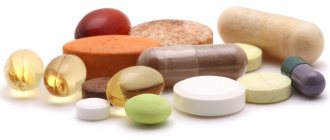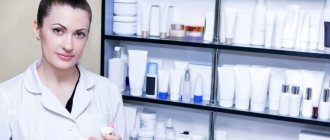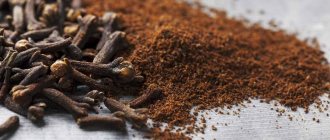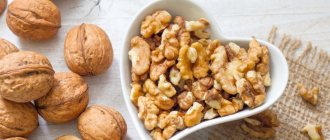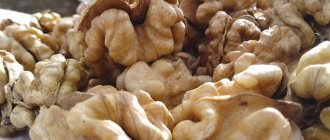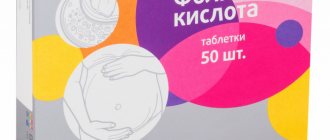Foods Rich in Vitamin C
Vitamin C is found in plant foods - vegetables, fruits, berries. It has always been believed that the highest dosages of vitamin C are found in citrus fruits, and the more acidic the citrus, the more “ascorbic acid” it contains. This is completely wrong!
Firstly, a sour lemon contains one and a half times less vitamin than a sweet orange, and secondly, both fruits contain little of it - about the same amount as apples. There is much more vitamin in dill, walnuts, rose hips, and sea buckthorn. They should be used intensively for viral diseases, instead of endlessly drinking tea with lemon.
Compound
The composition of the dragee includes ascorbic acid, starch syrup, sugar, talc, light mineral oil, yellow wax, dye E104 (quinoline yellow), orange flavor.
Composition of r/ra for IV and IM administration: ascorbic acid (0.05 g/ml or 0.1 g/ml), sodium bicarbonate and sulfite, water saturated with carbon dioxide for injection.
The tablets contain ascorbic acid, dextrose, sugar, potato starch, additive E470 (calcium stearate), flavoring (strawberry/raspberry/cranberry/wild berries).
Chewable tablets contain ascorbic acid, refined sugar, magnesium stearate, aspartame , microcrystalline cellulose, orange flavor, hypromellose, sunset yellow E110 or beta-carotene.
Increased need for vitamin C
In pregnant women, the need for it increases by about 10 mg, and in nursing women - by almost half. Also, increased amounts of vitamin C are needed by smokers and those who are exposed to harmful occupational factors.
During acute illnesses, it is permissible to consume up to 10 daily norms at a time! When recovering from various diseases, under high loads, in the cold season, you also need more vitamin C than usual.
Although many situations require increased use of vitamin C and the use of high dosages, it is not recommended to increase doses indefinitely. When consuming more than 2 g of the substance per day, a toxic effect of ascorbic acid on kidney tissue is observed.
Side effects
From the heart, vascular and hematopoietic systems: neutrophilic leukocytosis , thrombocytosis , erythropenia , hyperprothrombinemia .
From the sensory organs and nervous system: weakness and dizziness (with too rapid administration of ascorbic acid intravenously).
From the digestive tract: when taken orally - diarrhea (when taking more than 1 g/day), irritation of the mucous membrane of the digestive canal, accompanied by nausea, diarrhea , vomiting, erosion of tooth enamel (with frequent use of chewing tablets or dissolving pills/tablets).
Metabolic disorders: disruption of metabolic processes, inhibition of glycogen , excessive formation of adrenergic steroids , water and Na retention, hypokalemia .
From the urogenital tract: increased diuresis , formation of oxalate stones (especially with long-term intake of more than 1 g per day), damage to the glomerular apparatus of the kidneys .
When injected into a muscle, pain at the injection site may occur; injection into a vein may be accompanied by a feeling of heat.
The substance is a strong allergen and can provoke hypersensitivity reactions even in cases where the person does not exceed the recommended daily dose.
Symptoms of an allergy to ascorbic acid manifest themselves in the form of skin hyperemia and the appearance of a skin rash.
Biological role of vitamin C
The functions of vitamin C are numerous, and they make its use very important for maintaining and improving health. The meaning of ascorbic acid is as follows:
• Is an antioxidant. This means that the substance resists the destructive process of lipid peroxidation in tissues, protects the body from diseases and aging. • Strengthens the immune system, increases its “alertness” against harmful microorganisms, especially viruses. • Promotes the full formation of connective tissue, strengthens bones and joints. • “Helps” folic acid, vitamin A, and iron to be absorbed and exhibit their effects. • Improves skin condition. Thanks to its independent anti-inflammatory effect, it reduces the severity of inflammation in acne and acne. • Reduces bleeding, strengthens blood vessels. • Prevents the rapid development of atherosclerosis, inhibits the growth of cholesterol plaques in blood vessels. • Reduces the toxicity of alcohol, improves detoxification, neutralization of many toxic and harmful substances: components of tobacco smoke, substances that pollute water and air, drug metabolites, etc. • Reduces the negative impact of stress on health. • Accelerates the restoration of various tissues when they are damaged. • Has a brightening effect on the skin.
Ascorbic acid price, where to buy
The average price of Ascorbic acid in 2 ml ampoules (package No. 10) is 39 rubles/20 UAH. The price of tablets varies depending on the concentration of the active substance and the number of tablets/dragés in the package. You can buy 0.025 g tablets (package No. 10) in Ukrainian pharmacies for 3 UAH, in Russian pharmacies for 7 rubles.
- Online pharmacies in RussiaRussia
- Online pharmacies in UkraineUkraine
- Online pharmacies in KazakhstanKazakhstan
ZdravCity
- Ascorbic acid and rosehip tablets Solgar/Solgar 100pcsSolgar Vitamin and Herb
942 rub.order - Ascorbic acid with glucose 40 pcs. JSC PFK Update
103 rub. order
- Ascorbic acid, etc. 50 mg 200 pcs. JSC Ufimsky Vitam.Z-D
26 RUR order
- Ascorbic acid powder 2.5g 50 pcs. Ozon LLC
RUR 631 order
- Be-be-bears Ascorbic acid with raspberry flavor 770 mg 10 pcs. VTF LLC
33 rub. order
Pharmacy Dialogue
- Ascorbic acid (other No. 200) FS-UfaVita
26 RUR order
- Ascorbic acid (Vitamin C) (amp. 10% 2ml No. 10) Biosynthesis OJSC
51 RUR order
- Ascorbic acid (Vitamin C) (amp. 5% 2ml No. 10) DHF JSC
41 rub. order
- Ascorbic acid (por. 2.5 g (dietary supplement)) Meligen FP ZAO
8 rubles order
- Ascorbic acid (table No. 10 with glucose) Ecotex
9 RUR order
show more
Pharmacy24
- Ascorbic acid 0.05g No. 50 dragee PAT "Kiev Vitamin Plant", Kiev, Ukraine
6 UAH. order - Ascorbic acid 0.025g N10 mint tablets PAT "Kiev Vitamin Plant", Kiev, Ukraine
5 UAH order
- Ascorbic acid 50 mg N50 chewable tablets PAT "Lubnifarm", Ukraine
8 UAH order
- Ascorbic acid glucose 0.1g No. 10 tablets PAT "Kiev Vitamin Plant", Kiev, Ukraine
4 UAH order
- Ascorbic acid lemon 0.025 g No. 10 tablets PAT "Kiev Vitamin Plant", Kiev, Ukraine
5 UAH order
PaniPharmacy
- Ascorbic acid solution d/in.50 mg/ml amp.2ml No. 10 Ukraine, Lekhim-Kharkov JSC
19 UAH order
- Ascorbic acid solution d/in.100 mg/ml amp.2ml No. 10 Ukraine, Lekhim-Kharkov JSC
25 UAH order
show more
Signs of vitamin C deficiency
Vitamin C deficiency is common and its symptoms are familiar to many people. Among the signs of hypovitaminosis C, there may be such phenomena as a tendency to bleeding gums, easy formation of bruises on the body, frequent incidence of colds, a predisposition to exacerbations of existing chronic diseases, slow healing of injuries and delayed recovery, discomfort in the joints, problematic skin, hair loss, nosebleeds etc.
With a critical deficiency of the vitamin, a disease known as scurvy develops. It is rare in the modern world, but used to be extremely common. Patients experienced frequent bleeding, teeth falling out, and serious damage to joints and bones.
Factors influencing the vitamin C content of foods
Ascorbic acid is a “fragile” vitamin. Upon contact with air, it oxidizes, which leads to some loss of its properties. For this reason, food containing vitamin C is not recommended for long-term storage. Fruit and vegetable juices should be drunk freshly squeezed.
The vitamin is also destroyed when exposed to high temperatures; cooking leads to almost 100% loss of this substance. Therefore, vegetables and fruits should be consumed fresh.
Some of the ascorbic acid is retained in products when frozen; a minimal amount of it “survives” when dried. The destruction of the vitamin is also observed in light. This means that you need to use dark, cool places to store vegetables.
Important fact. The vitamin C content of different products depends greatly on their shelf life. The maximum amount of ascorbic acid is present in ripe, fresh fruits. Meanwhile, kiwis, oranges, and lemons that “come” to our country were collected long before they reached optimal ripeness, and more than 2 months can pass from their collection to consumption. Accordingly, they lose most of their beneficial properties and vitamin C.
As a result, in order to meet the daily requirement for ascorbic acid, a person needs to eat several kilograms of plant foods daily. This is impossible. And this is precisely what leads to the fact that most of us live in conditions of chronic hypovitaminosis and need to take additional dosages of vitamin C.
Release form
- Dragees, packaged in 50, 100 or 200 pcs. in bottles made of polymer materials/glass jars or 10 pieces in blister packs, 5 packs in a cardboard box.
- R/R for intravenous and intramuscular administration of 5 and 10% in ampoules of 1, 2 and 5 ml, 10 ampoules in a cardboard box.
- Lyophilisate for the preparation of solution for intravenous and intramuscular administration. Dosage 0.05 g. The drug is available in ampoules, 5 ampoules in a cardboard pack complete with solvent (water for 2 ml).
- Powder for the preparation of oral solution for oral administration. Dosage 1 and 2.5 g; sold in paper bags laminated with PE.
- Tablets, packaged in 50 pcs. in glass jars.
- Chewable tablets in package No. 30.
